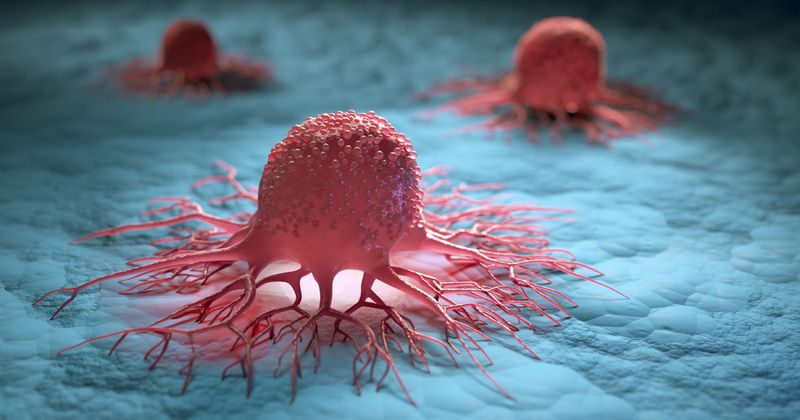Primary ovarian insufficiency, reproductive cancers may be linked across generations
Key takeaways:
- Women with primary ovarian insufficiency (POI) have increased risks for reproductive cancers.
- Family members of women with POI may also have higher risks for some cancers.
BOSTON — People with primary ovarian insufficiency have higher risk for breast cancer and borderline increased risk for ovarian cancer compared with the general population, and risks for some cancers extend to their relatives, data show.
In an analysis of more than 600 women in Utah with primary ovarian insufficiency (POI), or menopause before or at age 40 years, along with data from three generations of their relatives, researchers also observed that risks for breast, colon and prostate cancer are higher among first-, second- and third-degree relatives of women with POI.

“This suggests that there is a common risk for POI and reproductive or hormonally influenced cancers, and our preliminary data would suggest that this is genetic risk, with gene variants associated with both of these disorders,” Kristy Allen-Brady, PhD, of the division of endocrinology, metabolism and diabetes at the University of Utah School of Medicine, said during a presentation at ENDO 2024.
History through genetic data
Through next-generation sequencing in women with POI, researchers have identified deleterious variants in DNA damage repair and transcription fidelity genes, Allen-Brady said. Based on underlying genetics, researchers hypothesized that a subset of women with POI may also be predisposed to reproductive or hormonally influenced cancers and that family members may be at risk.

“The association between POI and cancer is not unknown,” Allen-Brady said. “There have been cases of rare cancer syndromes that have been associated with POI at a young age. More recently, next-generation sequencing has demonstrated recessive mutations in MCM9 and BRCA2 as a cause of both POI and cancer risk.”
The researchers analyzed data from 613 women with POI and from 165 women who experienced early menopause from age 41 to 44 years, identified using electronic medical records from 1995 to 2022 from the University of Utah and Intermountain Healthcare systems. People with oophorectomy, Turner syndrome or previous chemotherapy or radiation were excluded.
“These two health care systems serve 85% of the population of the state of Utah, essentially making this a population study,” Allen-Brady said.
Researchers linked 416 of the women with POI with at least three generations of relatives — 2,405 first-degree relatives; 6,798 second-degree relatives and 17,666 third-degree relatives — using genealogy information from the Utah Population Database and to cancer diagnoses (breast, ovarian, endometrial, colon, testicular and prostate) using the Utah Cancer Registry. Researchers estimated relative risk for cancer among women with POI and amog relatives compared with population rates matched by age, sex and birthplace.
They also identified POI pedigrees with an excess number of observed cancer cases compared with the expected number in population controls.
Greater risks for breast, ovarian cancers
Among the 613 women with POI, researchers observed 18 cases of breast cancer.
“We expected eight,” Allen-Brady said. “So that is a twofold relative risk, and that was significant.”
Breast cancer was increased among women with POI (RR = 1.89; 95% CI, 1.2-2.84; P = .0056). Researchers observed three cases of ovarian cancer in the POI cohort and expected to observe 0.8, for an increased RR that was not significant, Allen-Brady said. Endometrial cancer was not increased in the POI cohort.
Women were on average aged 37 years when diagnosed with POI and mean age of 60 years at the time of breast cancer diagnosis. Only two women took hormone therapy after age 50 years.
“And, in fact, those two women had the latest age of breast cancer,” Allen-Brady said.
After incorporating the cohort of early menopause patients, researchers found that risk for breast cancer remained significant (RR = 1.9; 95% CI, 1.2-2.8; P = .7), as did risk for ovarian cancer (RR = 3.4; 95% CI, 1.2-8.6; P = .03), with no observed increased risk for endometrial or colon cancer.
Among the subset of 416 women with three generations of data, researchers found an excess of POI diagnoses in relatives vs. general population rates as well as increased risk for certain cancers.
For the second-degree relatives of women with POI and three generations of family members, researchers observed increased risks for breast (RR = 1.28; 95% CI, 1.08-1.71; P = .0078) and colon cancer (RR = 1.5; 95% CI, 1.14-1.94; P = .0036). Risk for ovarian cancer was no longer significant.
Prostate cancer was increased among first-degree relatives (RR = 1.64; 95% CI, 1.18-2.23; P = .0026), second-degree relatives (RR = 1.54; 95% CI, 1.32-1.79; P < .001) and third-degree relatives (RR = 1.33; 95% CI, 1.2-1.48; P < .001).
“We expect that the first-degree relatives may not be old enough yet to have developed cancers, as we only had 19% that were over the age of 65 years,” Allen-Brady said.
Researchers also observed 27 “high-risk pedigrees” that were high risk for reproductive or hormonally influenced cancer diagnoses.
“For the future, we are wondering whether next-generation sequencing may be appropriate to identify women who have both POI and cancer risk,” Allen-Brady said. “Women with POI at later ages should be counseled about their future health risks, and these may include cancer. We should also consider cancer risk when counseling women about hormone replacement therapy when they do carry these gene mutations.”

